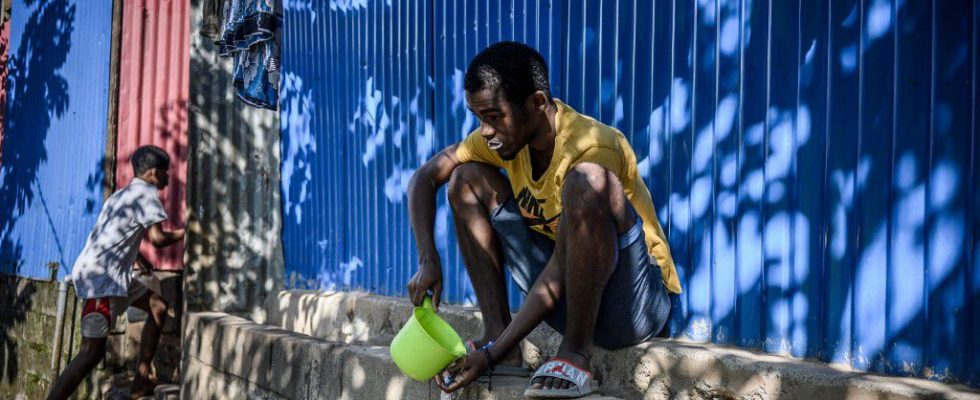For several months, the inhabitants of the island of Mayotte have lived to the rhythm of water cuts. From Monday, September 4, Mahorais will only have access to running water one day out of three. An extremely worrying situation that the government is trying to curb. Traveling to the Indian Ocean island, the Minister Delegate for Overseas Territories, Philippe Vigier, announced this Saturday 2 a plan to avoid a health crisis. Among the key measures of the device: the distribution of free bottles of water for vulnerable audiences, drinking water tanks and water ramps.
Presented as a “Marshall Plan for Mayotte”, it is primarily aimed at “vulnerable people”, such as “pregnant women and children” who will benefit from a daily water distribution of two liters per person. “30,000 people have already been identified,” said Philippe Vigier. And to add that the list of beneficiary audiences will be refined with the Regional Health Agency (ARS) and the municipalities.
Fifteen cisterns will be in the coming days distributed on the territory and filled thanks to a “water treatment station” so that there is “zero health risk”, for a budget of 2.5 million euros, said the minister. “In addition, 200 water ramps will be deployed on the territory.”
“That’s the emergency”, he explained, before recalling the “considerable work to be done on the leaks, on the interconnection”, between the north and the south less rich in water, to here at the end of October. The increase in the capacity of the desalination plant is scheduled for the end of 2023, according to forecasts from the prefecture. A team of five engineers was also dispatched to the water union to support it at the engineering level, according to the ministry’s office.
Worst drought since 1997
Affected by its worst drought since 1997, the French department suffers from its overpopulation and its growing water consumption, while its supply depends mainly on rainwater. However, the filling rates of the two hill reservoirs of Combani and Dzoumogné were, according to official data, 25% and 14% on August 24, against 106% and 82% on the same date in 2022.
For several months, water has therefore been distributed in dribs and drabs to the inhabitants of the island, ie 300,000 people according to the National Institute of Statistics and Economic Studies (Insee), not counting undocumented migrants. This is why, in order to spare the remaining resources before the next rainy season which will not arrive before November, the authorities have further tightened access to drinking water. “The water will be cut off at 4 p.m. and then put back on at the same time 48 hours later,” said the prefecture in a press release which details “the diagram of water towers”.
